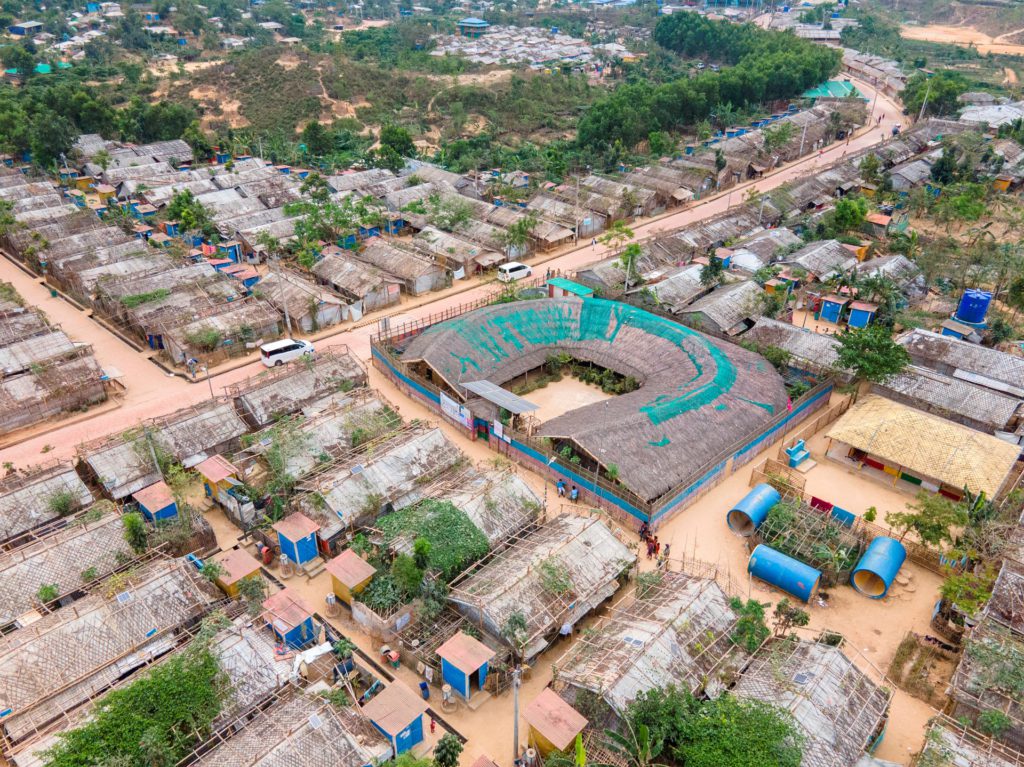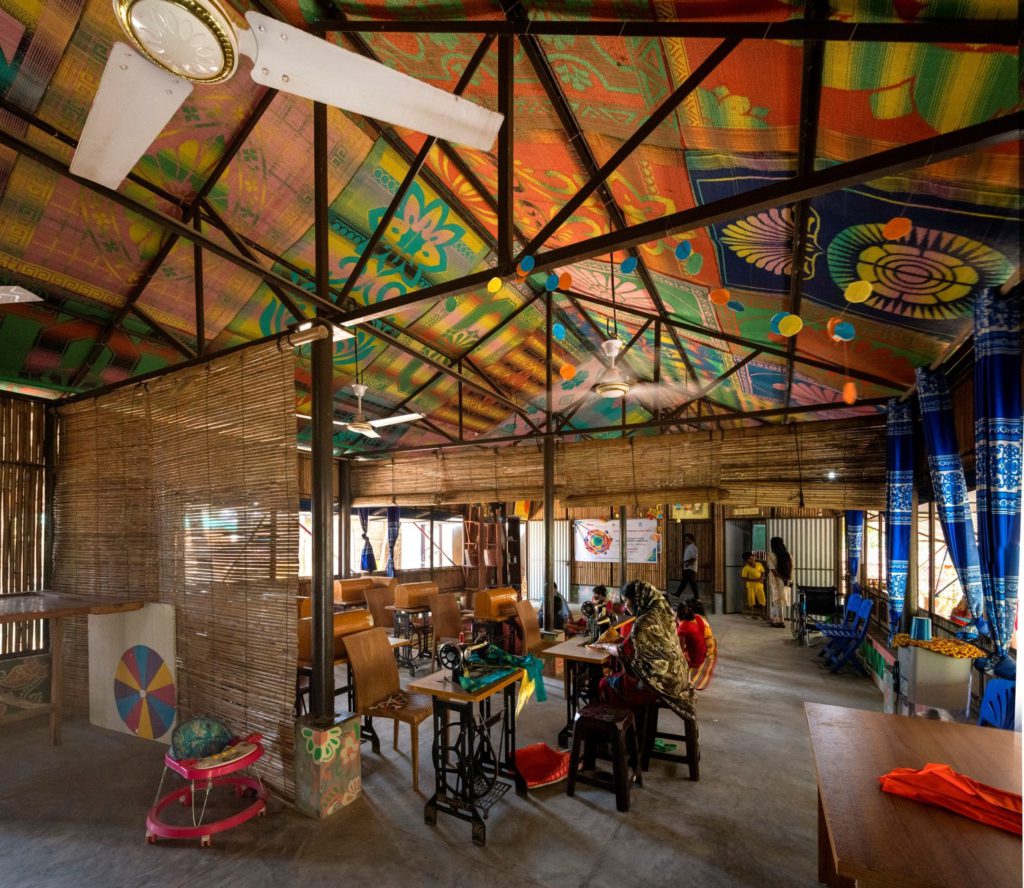Architecture of refuge: Community Spaces in Rohingya Refugee Response
November 30, 2022

In August 2017, escalations of extreme violence against their community—especially women and girls—forced around 700,000 Rohingya people to seek refuge in Bangladesh almost overnight. This unprecedented scale of displacement caused refuge settlements in the border areas of Ukhiya and Teknaf to explode in growth. It is presently the world’s largest collective refugee camps, with children making up almost half of the settlement’s 1.1 million population.
Within five years since the mass exodus, the prioritisation of refugees’ needs has changed. In the post-emergency phase, the focus was on basic needs of food/water and shelter. But as the situation stabilised, spaces for education, community interaction as well as income generation became increasingly important.
Thus, these community spaces were created throughout three phases: the post-emergency period, the transitional period, and the development period.
Currently, there are six buildings that serve to provide much-needed safe spaces, centred around the most vulnerable groups of women and children. They have been built with materials that the people are familiar with, like bamboo and thatch, and designed with an attention to detail to reflect the community’s identity. These spaces have recently received the Aga Khan Award for Architecture in the 2022 cycle.


Participatory process
The design process was mostly conducted by collaborating with the end users in the field, without drawings or models. Interventions were created sequentially to meet specific needs and suited to each context.
The Shantikhana Women Friendly Space was the first safe space to be created. “We tried to develop and propose new solutions in this tropical monsoon climate, and we got the opportunity to do the first woman-friendly space in the Camp 4 extension,” said Saad Ben Mostafa, one of the architects, in the Aga Khan award recipient video.
The space was designed with a very low height to withstand cyclones, with a complex roof truss that was built by Rohingya bamboo workers. As the construction started before the design was finalised, the workers were encouraged to express their skills and artistic freedom.


A dignified approach
The safe spaces stood out from other settlement buildings in the camps, “because it has a very ‘soft’ quality,” Mostafa described. “A good quality space can really lift the spirits up for everyone. After doing this first project, a space for design professionals was established in this situation. We started receiving offers for more buildings like this, and then we entered the transitional period.”
One community support centre uses colourful mattresses as roof insulation; another mixes natural materials with industrial ones; another is built around existing betel nut trees, preserving their existence.


These spaces have grown to comprise programmes for skill development, such as facilities to create and showcase handmade products; community-based protection (CBP) activities; psychosocial support activities; children’s play spaces; and breastfeeding areas.
“We tried to create a dignified space, or a space that actually represents their identity with patterns, with colour, with texture and with the touch of their hands into the components of the building … Whenever we are not there anymore they can lead and develop further. They have the strength developed by themselves,” stated the architecture team.
PROJECT DATA
Project Name
Community Spaces in Rohingya Refugee Response
Project Location
Teknaf, Bangladesh
Completion Year
2019
Clients
BRAC HCMP; ActionAid
Architects
Rizvi Hassan; Khwaja Fatmi; Saad Ben Mostafa
Photography
Aga Khan Trust for Culture/Asif Salman
References:
https://the.akdn/en/how-we-work/our-agencies/aga-khan-trust-culture/akaa/community-spaces-rohingya-refugee-response
https://www.unocha.org/rohingya-refugee-crisis
https://reliefweb.int/report/bangladesh/rohingya-crisis-who-bangladesh-monthly-situation-report-4-period-covered-1-30-apr-2022
https://reliefweb.int/report/bangladesh/bangladesh-needs-and-priorities-rohingya-refugees-and-host-communities-coxs-bazar-2017-what-has-changed
To read the complete article, get your hardcopy at our online shop/newsstands/major bookstores; subscribe to FuturArc or download the FuturArc App to read the issues.

